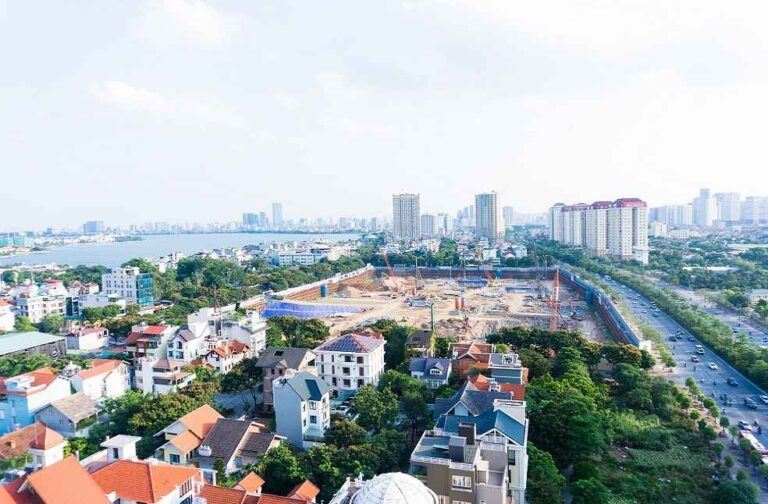As the US sees a post-pandemic office vacancy rate of 18.6%, Vietnam’s real estate industry is experiencing a resurgence. Commercial real estate is scarce and valuable in the rapidly growing Southeast Asian manufacturing powerhouse, making it an attractive investment prospect. Despite a recent crisis in construction due to a government crackdown on bond sales and the failure of nearly 2,000 property firms, there are signs of recovery.
Engineers are returning to work on the stalled Grand Manhattan project in Ho Chi Minh City, thanks to loan renewals and Prime Minister Pham Minh Chinh’s intervention. CBRE Group Inc.’s 2023 Asia Pacific Investor Intentions Survey ranks Ho Chi Minh City as the third-most-attractive destination for investors, with Hanoi in ninth place. These cities are drawing investors seeking diversification away from China, with Vietnam, Indonesia, and the Philippines looking increasingly appealing for all types of real estate investments.
However, Asian investors remain cautious due to high interest costs, global growth uncertainty, and potential contagion from financial troubles in the US. Despite these concerns, many opportunities in the region appear reasonably safe, with Singapore’s office market remaining resilient and Hong Kong returning to the map as its pandemic-era isolation ends.
Vietnam’s real estate market is also benefiting from multinational companies seeking supply-chain alternatives to reduce risks associated with the growing divide between Washington and Beijing. Although the threat of a US recession complicates this shift, prospects are improving for Vietnamese industries, particularly electronics. For instance, Apple’s major contract manufacturer for MacBooks will invest $120 million in a new plant in Nam Dinh province.
As Vietnam’s credit conditions ease, No Va Land Investment Group Corp., the company behind the Grand Manhattan project, is restructuring its debt. Authorities appear to support such efforts to get funds flowing into real estate again. Vinhomes JSC, Vietnam’s largest listed property developer, has seen its stock rise 20% since early March.
While short-term booms and busts are inevitable, the potential for growth in Vietnam’s real estate market is undeniable. With a median population age of 32 and only half of the population expected to be urbanized by 2030, the demand for office spaces and commercial properties is set to increase, making Vietnam an attractive destination for diversification-driven investors.
METAL WORLD: China boosts molybdenum output: vital for high-stress steel, medical uses



